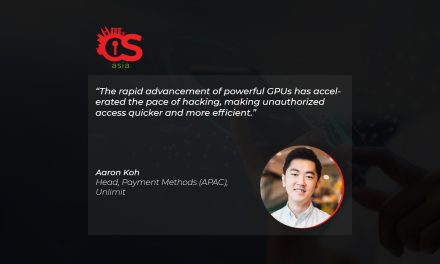Nowadays, enforcing cybersecurity is more about the unknown threats than the known. Here are the key bastions of battling the unknown.
What does it take for businesses to be confident in the resilience of their endpoint protection?
Evan Dumas, Regional Director (SEA), Check Point Software Technologies offers four vendor-agnostic key pillars for optimal endpoint security:
- Take the ‘Prevention First’ approach
Preventing an attack saves an organization a lot of time and money. Research shows that the average cost of a malware attack can come to US$2.6 million. Moreover, the losses do not end with just cost and time lost, but include damage to brand equity and customer trust.
Among the technologies that can help your organization take the prevention-first approach are:
- Anti-phishing (which include capabilities for unknown phishing sites)
- Anti-ransomware
- File sanitization
- Content Disarm & Reconstruction (CDR) Expert prevention
- Anti-bot
All these can help your organization by significantly reducing the attack surface to prevent attacks before they reach the endpoint.
2. Multi-layered security approach
There are millions of strains of unknown malware and many sophisticated evasion techniques. This means that stopping today’s most dangerous attacks requires an approach for inspecting more than one layer of infrastructure. Traditional solutions, including anti-virus, sandboxing, and legacy endpoint protection products do not have the sophistication required for such complexity since they offer limited inspection. The limitation comes from the fact that they use traditional detection methods, such as signatures or rule-based analysis, which simply cannot get the job done.
When taking a multi-layered approach to inspection, you can leverage three main capabilities, pushing your inspection to new heights:
- AI – With artificial intelligence solutions, dynamic and static analyses of files and executables are in force constantly, detecting unknown malware or suspicious activities before they are executed, with a high accuracy rate
- Global-shared threat intelligence – By using shared feeds from hundreds of millions of sensors and research labs, your IT team will have the knowledge and insights to take endpoint security to a whole other level
- Behavioral analysis – The ideal behavioral analysis engine collects indicators from endpoint devices, and correlates them with behavioral heuristics, and of course machine learning models
With such a multilayered approach to endpoint protection, you can maximise malware identification and classification and the get highest attack catch rate.
3. Post-infection remediation and recovery
No matter how comprehensive your state-of-the-art security endpoint solutions are, should a breach occur, a strong post-infection remediation and recovery capability will be invaluable. They should include:
- Automatic quarantining of infected machines
This will prevent the effects of any attack from spreading laterally across the rest of the corporate network - Constant monitoring and recording of endpoint events
This should include affected files, processes launched, system registry changes, and network activity, so you can create detailed forensic reports with the full context of the attack - Automatic remediation and sterilization of the entire cyber kill chain
This will let you restore affected devices to the last clean point and get full recovery of ransomware encrypted files - Incident response utilizing advanced algorithms and deep analysis of the raw forensic data
This helps to build a comprehensive incident summary, including actionable insights that empower system administrators and incident response teams to effectively triage and resolve the incident - Proactive threat hunting
This service records endpoint events for long-term retention, enriches the records with threat intelligence, and supplies hunt leads to enable security professionals to query the historical data and uncover the most advanced stealth attacks, identifying the source of the attack and remediating it
4. Consolidated Security Architecture
Things get more complicated when you are getting multiple solutions from multiple vendors. It is better to implement an integrated suite that is tightly integrated with network, cloud and mobile security.
Integration will simplify management, serving as a one-stop-shop for managing the entire security infrastructure. It also enables shared threat intelligence across the entire IT infrastructure, and it enhances attack correlation and threat hunting capabilities.
In addition, integration helps to reduce the total cost of ownership, because you will not have so many IT administrators and SOC resources for ensuring the organization’s security.
Concluded Dumas: “When you cover the four pillars to achieve the optimal endpoint protection solution tailored for your organization, you can be confident that you are one step ahead of the cybercriminals.”





















